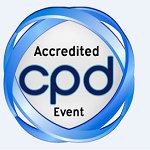Kara Spiller
Drexel University, USA
Title: Predicting wound healing complications: A personalized medicine approach to wound care
Biography
Biography: Kara Spiller
Abstract
Background: Wound healing can be impaired by bacterial infection or patient factors including diabetes, autoimmune disease, chemotherapy, and immunosuppression. Failure to achieve complete closure of wounds, whether they are combat wounds or chronic ulcers that are commonly observed in the veteran population, leads to impaired mobility, hospitalization, amputation, and even death. The selection of an appropriate, individually tailored treatment strategy from the myriad choices available on the market is critical to successful wound healing. Unfortunately, there is no accurate, objective way to determine if a wound is healing or not.
For example, in clinical practice, chronic diabetic ulcers that fail to show a 40% reduction in surface area (length x width) over 4 weeks are considered non-healing. However, this method of healing diagnosis has low accuracy (~60%) because these assessments are subject to error, can differ from one physician to the next, and convey only superficial characteristics of the wound. As a result, patients are treated with ineffective treatments for far too long (leading to amputation or death), or expensive therapies like synthetic skin substitutes and hyperbaric oxygen therapy are used when they are not necessary (causing waste to our healthcare system).
Therefore, we developed a quantitative molecular assay that uses debrided wound tissue that would otherwise be discarded to evaluate the behavior of wound macrophages, the inflammatory cells recognized as the major regulators of healing, in order to determine if a wound is on a healing trajectory or is likely to develop complications and fail to heal.
Methods: In the pilot study, debrided wound tissue, collected during routine wound care that would otherwise be discarded, was collected from the ulcers of 21 diabetic patients over 4 weeks. Treatment and follow-up were conducted for an additional 8 weeks to determine if the ulcer had completely healed at 12 weeks. Gene expression data of a panel of 7 biomarkers related to the behavior of macrophages was converted to a single score that is indicative of the inflammatory status of the wound. Briefly, the score represents a ratio based on the M1/M2 paradigm of macrophage behavior, in which M1 macrophages are inflammatory yet initiate the healing process, while M2 macrophages are anti-inflammatory and facilitate resolution of the healing process. Non-healing wounds are believed to be stalled in the M1 phase.
Results: In the pilot study of 21 patients with diabetic ulcer, the M1/M2 score decreased over a 3-week period for all wounds that ultimately healed by 12 weeks of treatment (n=9 patients). In stark contrast, the scores stayed the same or increased for all wounds that ultimately failed to heal (n=12 patients). In fact, the fold change in the score at 4 weeks from the initial visit was almost 100 times higher for nonhealing wounds compared to healing wounds (p<0.0001). Using a 4-week fold-change cutoff of 1 (so that an increase was used to classify non-healing wounds and a decrease was used to classify healing wounds), the score successfully predicted healing or nonhealing in 19/21 patients in this study (100% positive predictive value, 83.3% negative predictive value, and 90% overall accuracy). Interestingly, healing wounds generally had higher M1/M2 scores than non-healing wounds at the start of the study, suggesting that inflammation is critical for wound healing and that with further optimization, analysis of a single sample may be predictive of likelihood of developing wound complications.
Conclusions: These results indicate that analysis of wound tissue that would otherwise be discarded can be used as a quantitative, accurate indicator of healing. Such an assay will be critical for employing a precision medicine approach to wound care.
Next steps: More patients are needed to further optimize this diagnostic assay. Wound samples can be stored in a buffer and shipped at room temperature to our lab for analysis. If you are interested in collaborating on this project.
Future directions include expanding to other wound types (combat wounds, burns, chronic venous ulcers, etc.) and developing a rapid assay for point-of-care diagnosis. Our pilot data suggest that this method will be readily applicable to burn wounds without the need for further optimization.
Citation: Nassiri, S., I. Zakeri, M.S. Weingarten, K.L. Spiller. “Relative expression of pro-inflammatory and anti-inflammatory genes reveals differences between healing and nonhealing human chronic diabetic foot ulcers.” Journal of Investigative Dermatology 2015 (135) 1700-1703.

